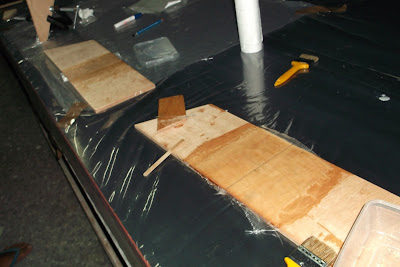The work was made very easy with the DeWalt tools we just received. Those 3 inch screws went into that green wood as if through butter :D
Long afternoon of work but a good job done though we were slightly hampered by the rain. But we didnt allow our spirits to be dampened by the weather ;)
 |
| Bored at the rain causing spray onto our wood pile :D ....waiting for the weather to improve. |
 |
| First testing of the DeWalt hammer drill. That machine is a beast :D |
 |
| Early evening. Almost done with wood work. |
 |
| Takes barely 5 s to insert a 3inch screw into that wood with our hammer drill. |
 |
| Job done. Base is perfectly level and square. Very strong construction. |
Here's a demo of the machine for anyone interested to know a little bit more about our DeWalt hammer drill
http://www.youtube.com/watch?v=WGXQfnWdwIc


































